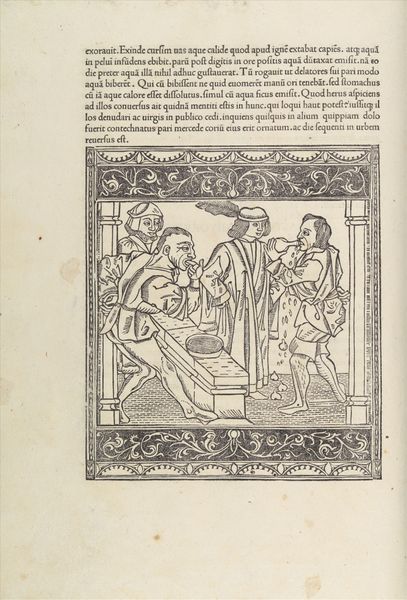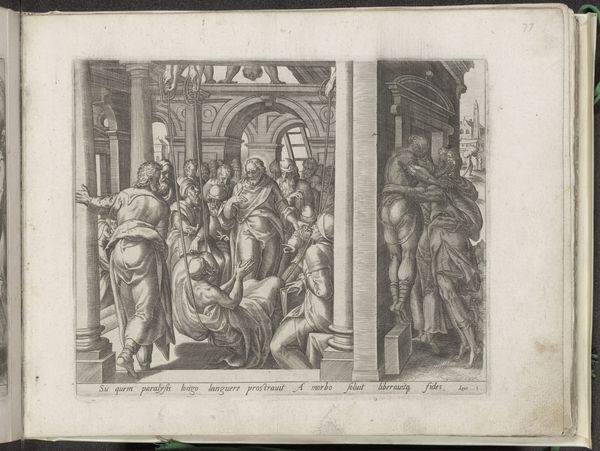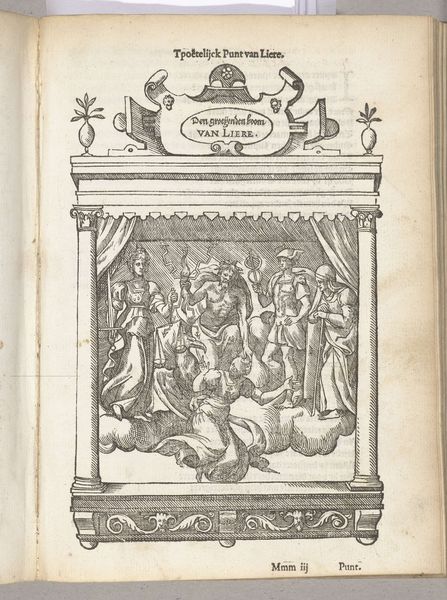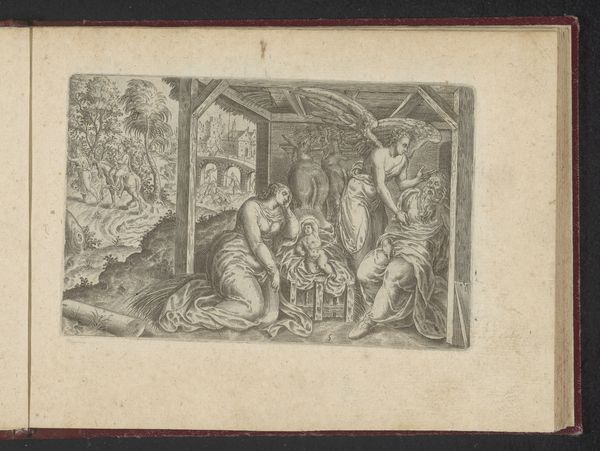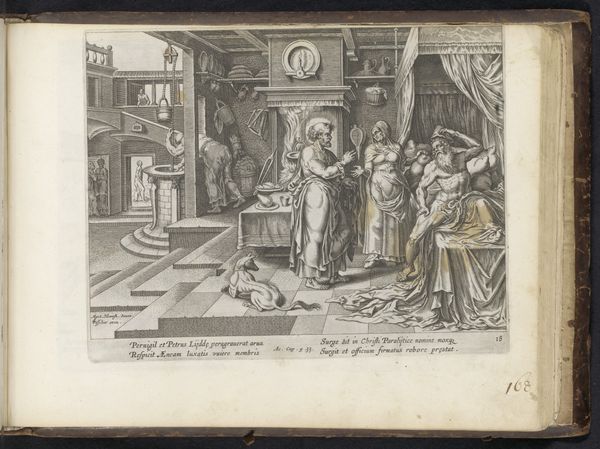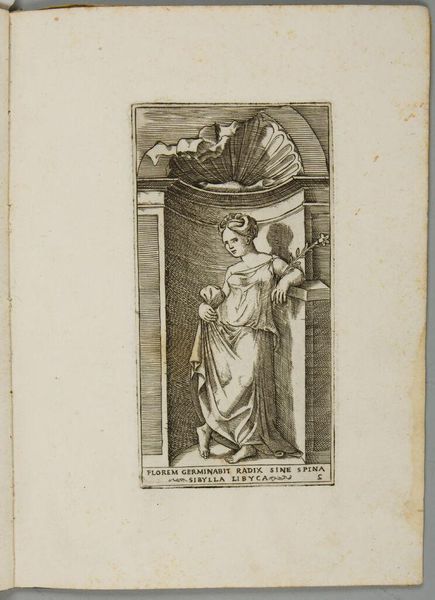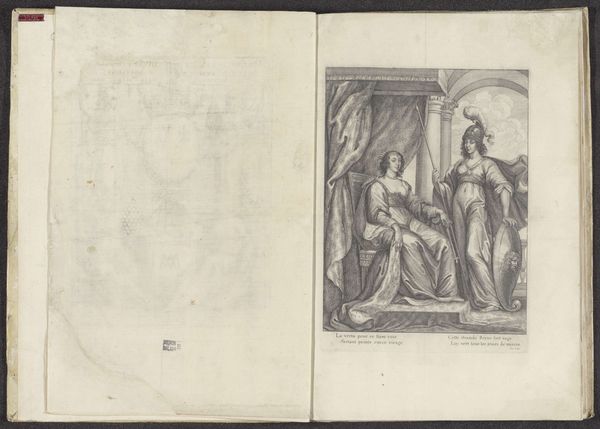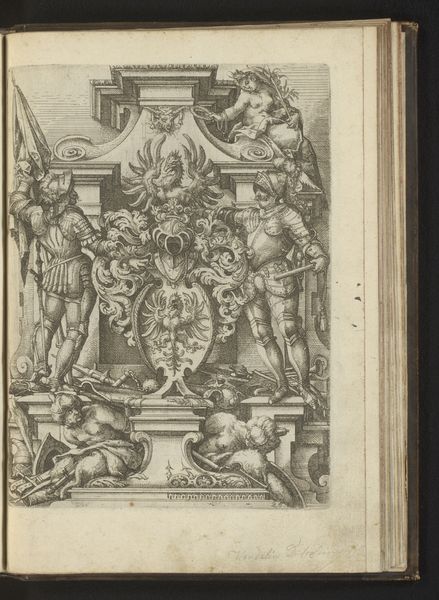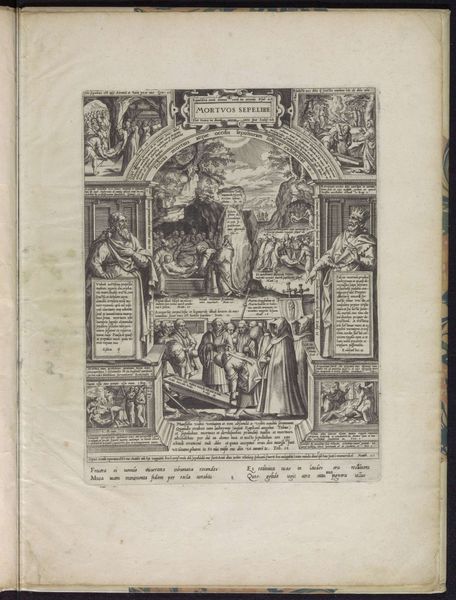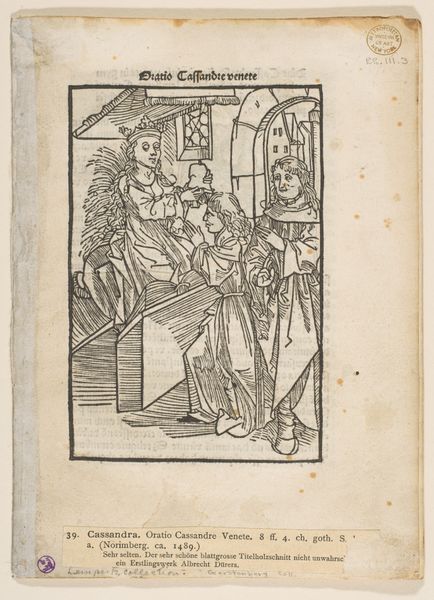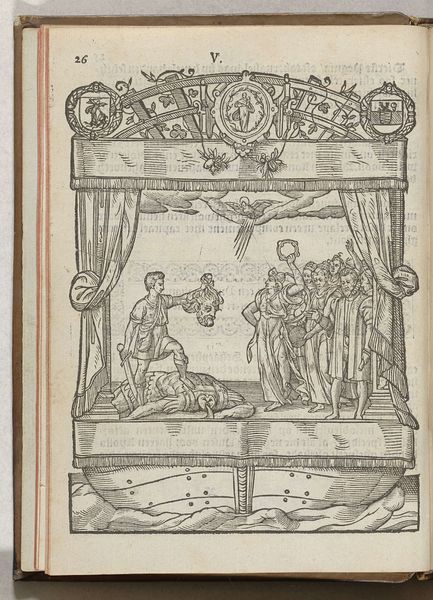
print, engraving
#
allegory
# print
#
figuration
#
history-painting
#
northern-renaissance
#
engraving
Dimensions: height 217 mm, width 153 mm
Copyright: Rijks Museum: Open Domain
Curator: This is a striking 16th-century engraving, "Blazoen van De Olijftak (Antwerpen), 1561." It was created anonymously sometime between 1561 and 1562. Editor: The mood is so heavy! You immediately get a sense of defeat in the figure on the left; she seems weighed down with her surroundings. And I notice weapons strewn on the floor—an explicit reference to material conditions discarded, rendered useless in her present situation. Curator: The context here is vital. "De Olijftak," meaning "The Olive Branch," was a society in Antwerp. These societies played key roles in shaping the city's cultural and political identity. These "Blazoen" prints like this one functioned as emblems—assertions of group values within civic life. Editor: Engraving allows for a level of detail here. But to me the real skill and art of the print-making is conveying this emotional narrative using an exacting process. It strikes me that this object had the capacity for mass production and distribution which speaks to this particular historical moment, yes? Curator: Exactly! The medium facilitates a broader circulation of ideas within the community. Notice the architectural ruins in the background as well; there is a distinct air of lament. It reflects the social anxieties present within the group at that time. These engravings were explicitly made to elicit a shared sense of belonging to this group, but even to sway opinions. Editor: Look at the rendering of fabric on the figures and how that drapery is treated almost as if it is an architecture in itself. It conveys both wealth and status. I would even go so far to argue, looking closely, that there is a direct visual link made by the unknown author in how fabric sits and hangs on the left-hand seated figure's figure. Her cloth feels intentionally rendered more heavy than the fabric adorning the bodies of her supposed deliverers on the right side of the print. I can't help but wonder whether or not it functions as visual device through which material difference communicates broader power and economic differentials among people... Curator: That's a fantastic observation! And it underscores the power of imagery in articulating social relationships and navigating difficult sociopolitical realities of the moment. Editor: It certainly gives you pause to reflect on labor, society, production... Curator: Precisely, and in viewing the work, it allows us to learn more about civic identity of the 16th century.
Comments
No comments
Be the first to comment and join the conversation on the ultimate creative platform.

